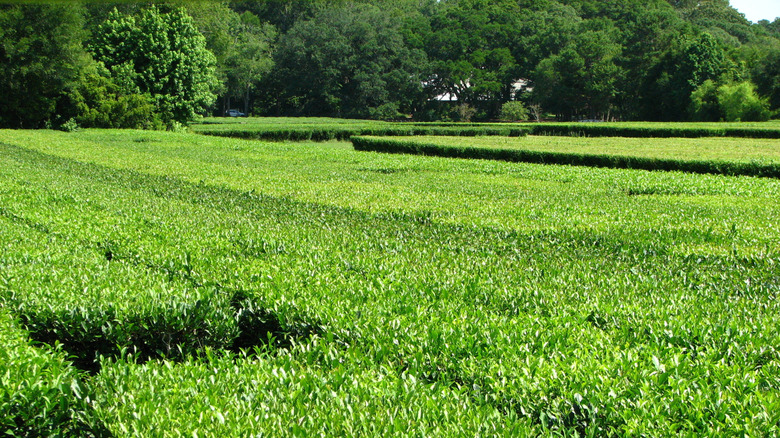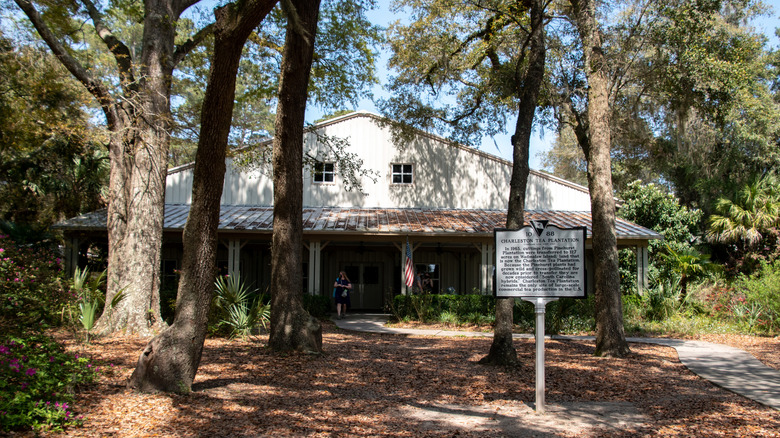North America's Only Tea Plantation Is A Hidden Southern Gem Offering Scenic Tours And Tastings
Little did the leaves that legendarily floated into an open pot of boiling water next to Chinese Emperor Shennong in the 28th century B.C. know they would change the world. The combination of camellia sinensis (tea plant) and water became tea, the world's most popular drink after water. It would alter the course of human history, particularly when it reached Boston, where protesting colonists threw 340 chests of it into the harbor during the Boston Tea Party in 1773, helping ignite the Revolution. The English association helped push Americans more toward coffee as the beverage of choice — establishing a ceramic-clad relationship that is only recently seeing cracks as newer generations start to embrace tea.
This increasing appreciation is on full display at the nation's only tea plantation in Charleston — the gorgeous South Carolina City that blends a striking European appearance with Southern charm and is home to one of the world's most charming main streets. Charleston Tea Garden, now owned by the Bigelow Tea Company, welcomes 75,000 of these tea enthusiasts each year to explore 127 acres of growth and production on Wadmalaw Island, 22 miles southwest of historic Charleston. There, they can explore the endless rows of tea bushes on a 40-minute trolley ride before disembarking at the greenhouse, where new tea plants are strengthened and matured to flourish outside later. On the factory tour, visitors can watch the harvested leaves transform into the green and black teas that eventually fill cups and warm hearts.
History and tea varieties at the Charleston Tea Garden
The roots of the tea plants at Charleston Tea Garden extend to the late 1700s when French botanist André Michaux arrived in the area and established a botanical garden. Among the crape myrtle, mimosa, sweet olive, and ginkgo, he also grew camellia sinensis. While his efforts were ultimately unsuccessful, many of his plants live on in the factory's present-day greenhouse as descendants grown from the cuttings. Charleston Tea Garden itself was not born until 1987 when third-generation tea taster William Barclay Hall purchased the former potato farm on Wadmalaw Island and launched a commercial tea business that produced American Classic — the first ever drinking tea grown entirely in America.
Today, that's expanded to other varieties, including Charleston Breakfast, green tea, and Early Grey. And, as this is the South, sweet tea blends are available with raspberry, peach, and mint. Once a year, in spring, comes the first flush: Tea made from the first leaves of the new season, prized the world over for the flavor imparted by the young, delicate growths. At Charleston Tea Garden, this comes through all the more, thanks to the prohibition of pesticides, herbicides, fungicides, and insecticides. The first flush period also makes for a great time to visit, although those arriving in the fall may get the opportunity to see the tea plants blossom into delicate white and yellow flowers. Discover more of the nature that flourishes in these South Carolina lowlands at this underrated wildlife refuge between Charleston And Hilton Head.

